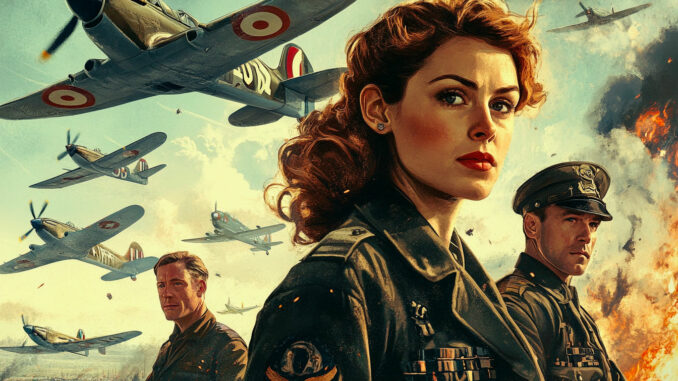
Here is a technical analysis of the aircrafts involved in the Battle of Britain (1940), with specific data and concrete examples of the models used.
The Battle of Britain, which took place between July and October 1940, was a crucial phase of World War II. This aerial conflict pitted the British Royal Air Force (RAF) against the German Luftwaffe. Germany sought to gain air superiority to pave the way for a potential invasion of Britain, known as Operation Seelöwe.
The aircraft deployed by both sides played a decisive role in the outcome of the battle. The Luftwaffe fielded fighters such as the Messerschmitt Bf 109 and Messerschmitt Bf 110, along with bombers like the Heinkel He 111, Dornier Do 17, and Junkers Ju 87 Stuka. The Bf 109, Germany’s main fighter, could reach a maximum speed of 570 km/h and had an operational ceiling of 11,000 meters. The bombers were capable of carrying several tons of bombs, with the Heinkel He 111 carrying up to 2,000 kg of explosive payload.
On the British side, the RAF primarily relied on the Supermarine Spitfire and Hawker Hurricane. The Spitfire, with its maximum speed of 582 km/h and an operational ceiling of 11,300 meters, was highly effective in aerial combat against enemy fighters. The Hurricane, although slightly slower with a maximum speed of 547 km/h, was robust and played a crucial role in intercepting German bombers.
Aerial tactics were influenced by the technical capabilities of these aircraft. The RAF leveraged its network of radar stations, known as Chain Home, to detect German raids from a distance. This technological advance allowed for more efficient use of aerial resources, guiding fighters toward engagement zones. Although often outnumbered, the British aircraft were strategically deployed to compensate for this disparity.
The technical limitations of the Luftwaffe also played a role. German fighters had a limited operational range, restricting their ability to escort bombers over long distances. This left the bombers vulnerable to attacks from British fighters as they approached the English coast. Additionally, the RAF benefited from the ability to quickly recover downed pilots, while captured German aircrew were lost to the war effort.
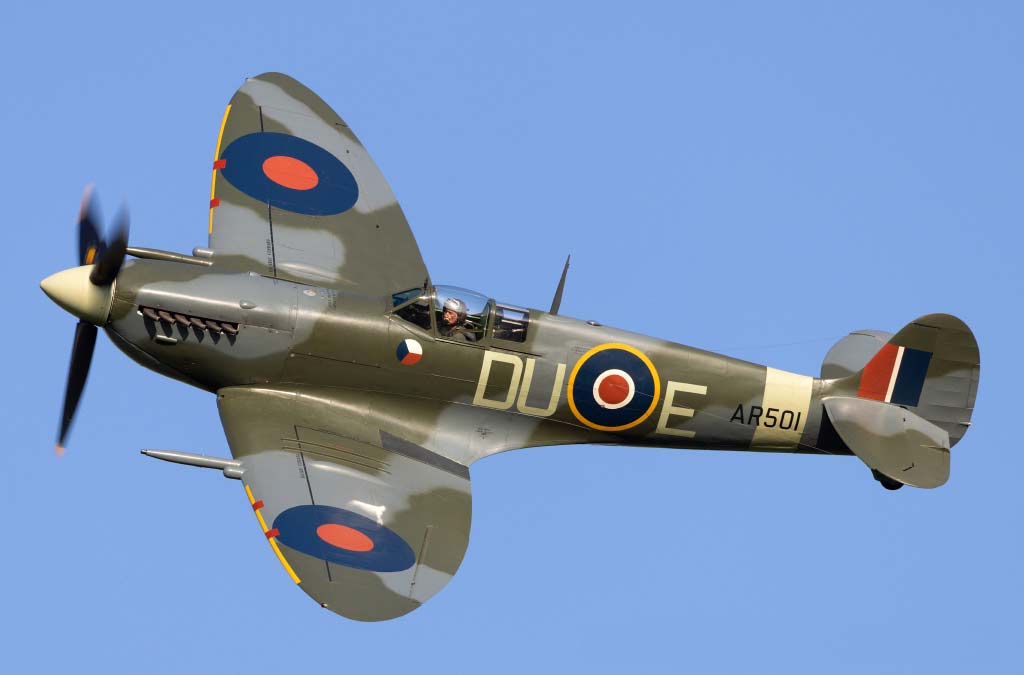
The losses sustained during the battle illustrate its intensity. The RAF lost approximately 1,023 aircraft, while the Luftwaffe saw the destruction of about 1,887 planes. These figures reflect the total commitment of both air forces.
Industrial production was also a key factor. The United Kingdom successfully ramped up aircraft production despite the bombing raids, increasing output from 446 planes in June 1940 to 563 in September of the same year. This increase allowed the rapid replacement of losses and maintained air defense capabilities.
The Battle of Britain was, therefore, a technological and tactical confrontation where aircraft played a central role. Advances in aeronautical design, communication, and strategy shaped the course of the conflict. The Luftwaffe’s failure to achieve air superiority forced Germany to abandon its invasion plans, marking a turning point in the war.
British aircraft
Supermarine Spitfire
The Supermarine Spitfire was a single-seat fighter with elliptical wings. It was powered by a Rolls-Royce Merlin engine with 1,030 horsepower. Its maximum speed reached 582 km/h, and its operational ceiling was 11,300 meters. Armed with eight Browning 7.7 mm machine guns, it was agile and highly effective in aerial combat.
Hawker Hurricane
The Hawker Hurricane, another single-seat fighter, was the backbone of the RAF. Powered by a Rolls-Royce Merlin engine with 1,030 horsepower, it reached a maximum speed of 547 km/h and had an operational ceiling of 10,970 meters. It was also equipped with eight Browning 7.7 mm machine guns. Though slower than the Spitfire, it was robust and highly effective against German bombers.
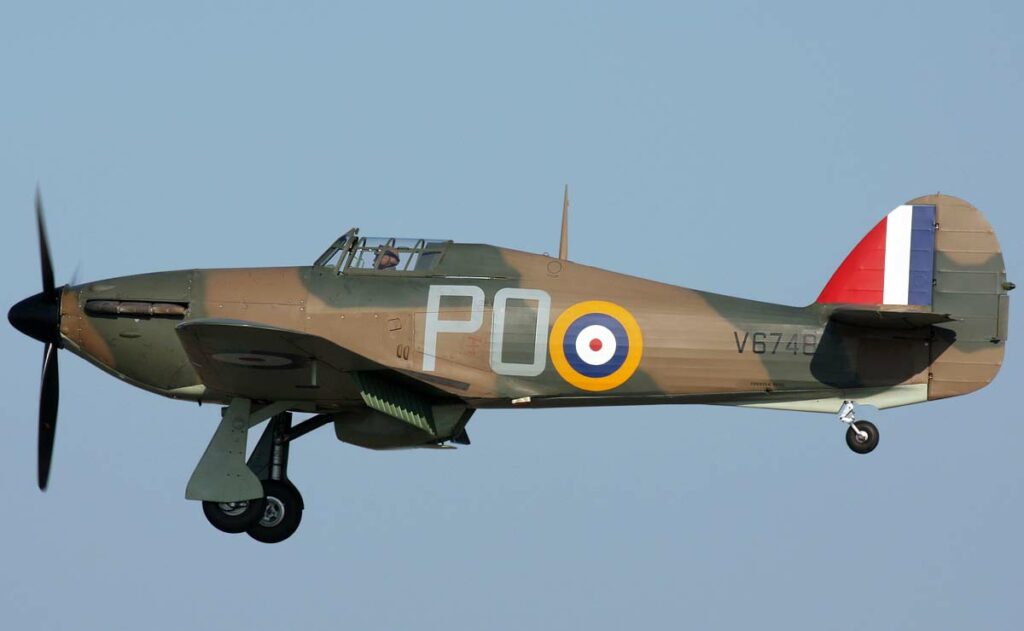
German aircraft
Messerschmitt Bf 109
The Messerschmitt Bf 109 was the principal German fighter. Equipped with a Daimler-Benz DB 601 engine with 1,050 horsepower, it could reach 570 km/h. Its operational ceiling was 11,000 meters. It was armed with two MG 17 7.92 mm machine guns and a 20 mm MG FF cannon.
Messerschmitt Bf 110
The Messerschmitt Bf 110 was a twin-engine heavy fighter. With two Daimler-Benz DB 601 engines, each producing 1,100 horsepower, it had a maximum speed of 560 km/h and an operational ceiling of 10,000 meters. It was armed with two 20 mm MG FF cannons and four MG 17 7.92 mm machine guns.
Junkers Ju 87 Stuka
The Junkers Ju 87 Stuka was a dive bomber. Powered by a Junkers Jumo 211 engine with 1,200 horsepower, it had a maximum speed of 390 km/h and could carry up to 700 kg of bombs. Armed with two MG 17 7.92 mm machine guns, it was vulnerable without fighter escort.
Heinkel He 111
The Heinkel He 111 was a twin-engine medium bomber. With two Junkers Jumo 211 engines producing 1,100 horsepower, it could reach 440 km/h and carry up to 2,000 kg of bombs. Its defensive armament consisted of three MG 15 7.92 mm machine guns.
Dornier Do 17
The Dornier Do 17, nicknamed the “flying pencil” due to its slim fuselage, was a light bomber. Powered by two Bramo 323 engines with 900 horsepower, it had a maximum speed of 410 km/h and could carry up to 1,000 kg of bombs. It was armed with four MG 15 7.92 mm machine guns.
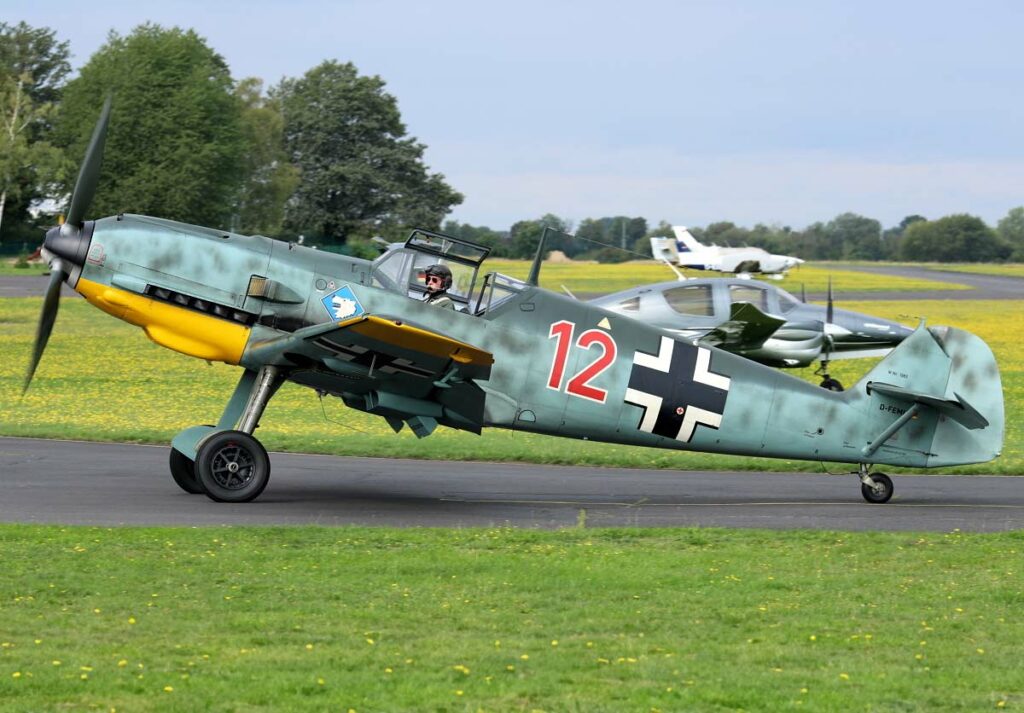
Technical and tactical importance of aircraft in the Battle of Britain
The technical performance of the aircraft had a direct impact on the aerial tactics employed during the Battle of Britain. The speed and maneuverability of the Supermarine Spitfire gave British pilots a significant advantage in aerial combat. With a maximum speed of 582 km/h and an operational ceiling of 11,300 meters, the Spitfire could effectively compete with the German Messerschmitt Bf 109.
The Hawker Hurricane, although slightly less capable with a maximum speed of 547 km/h, was easier and quicker to produce. This production efficiency allowed the Royal Air Force to rapidly increase its fighter strength. By July 1940, the RAF had 640 Hurricanes and 520 Spitfires, helping to counterbalance the initial numerical superiority of the Luftwaffe.
German fighters, such as the Bf 109, were constrained by their operational range of 660 km. This limitation prevented continuous bomber escort during deep missions into British territory. As a result, bombers became vulnerable to British fighters once the Bf 109s had to turn back to avoid fuel shortages.
The RAF exploited this tactical limitation by focusing its efforts on intercepting unescorted bombers. British radar stations played a crucial role in detecting enemy formations at a distance, allowing fighters to position themselves strategically. The integrated air defense system, known as the Dowding System, optimized resource allocation by directing squadrons where they were most needed.
In addition, British production capacity allowed for the quick replacement of lost aircraft. Aircraft factories ramped up production despite bombings, averaging 300 planes per month during the battle. This contrasted with Germany’s difficulties in replacing losses, particularly in skilled personnel.
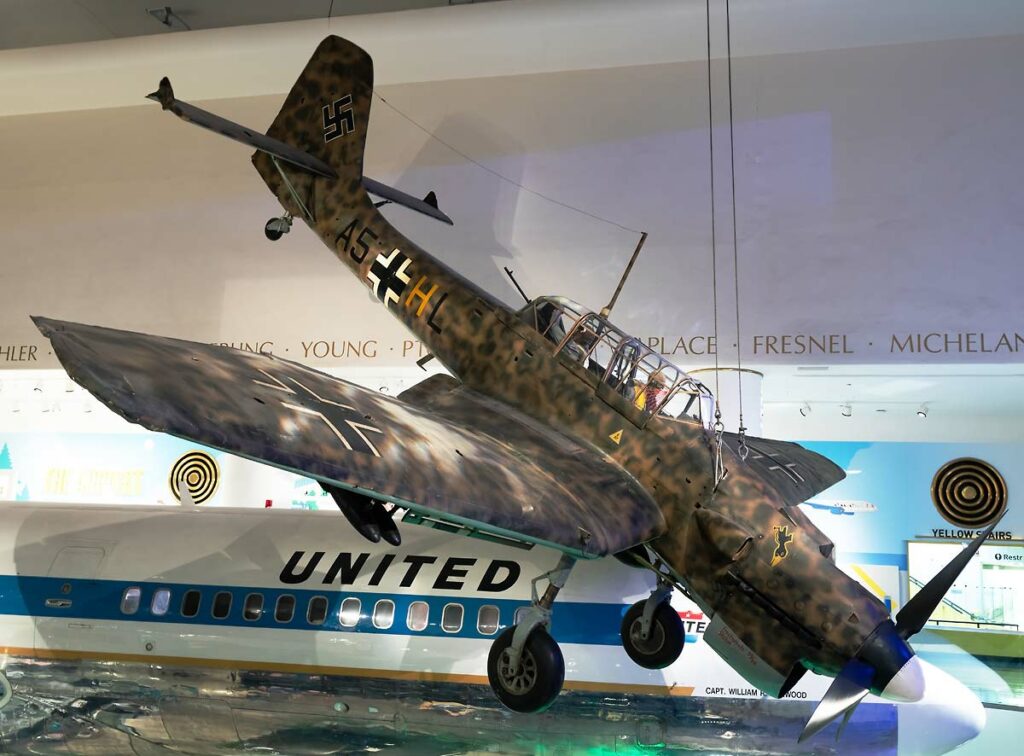
The performance of the aircraft also influenced individual combat tactics. Spitfire pilots often used vertical maneuvers to capitalize on their superior altitude performance, while Hurricane pilots focused on attacks against bombers, where their eight machine guns were particularly effective.
The technical characteristics of British and German aircraft shaped the strategies adopted by each side. The combination of speed, maneuverability, and mass production allowed the RAF to resist the Luftwaffe’s assaults. The limitations of German fighters in terms of range and escort capabilities reduced the effectiveness of strategic bombings, ultimately influencing the battle’s outcome.
The aircraft of the Battle of Britain were decisive in the conflict’s outcome. Technological advancements and aerial strategies highlighted the importance of air superiority.
War Wings Daily is an independant magazine.